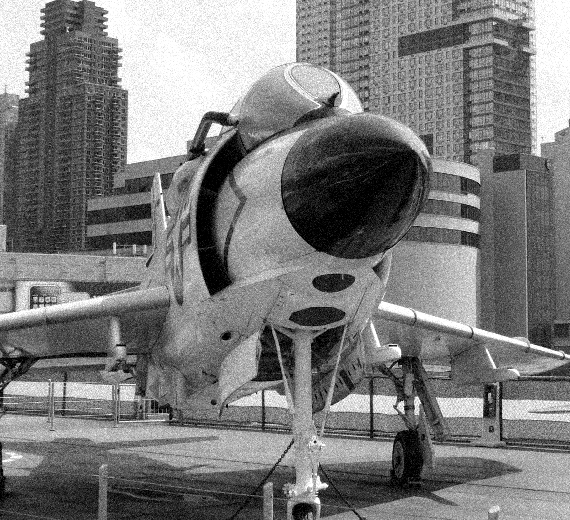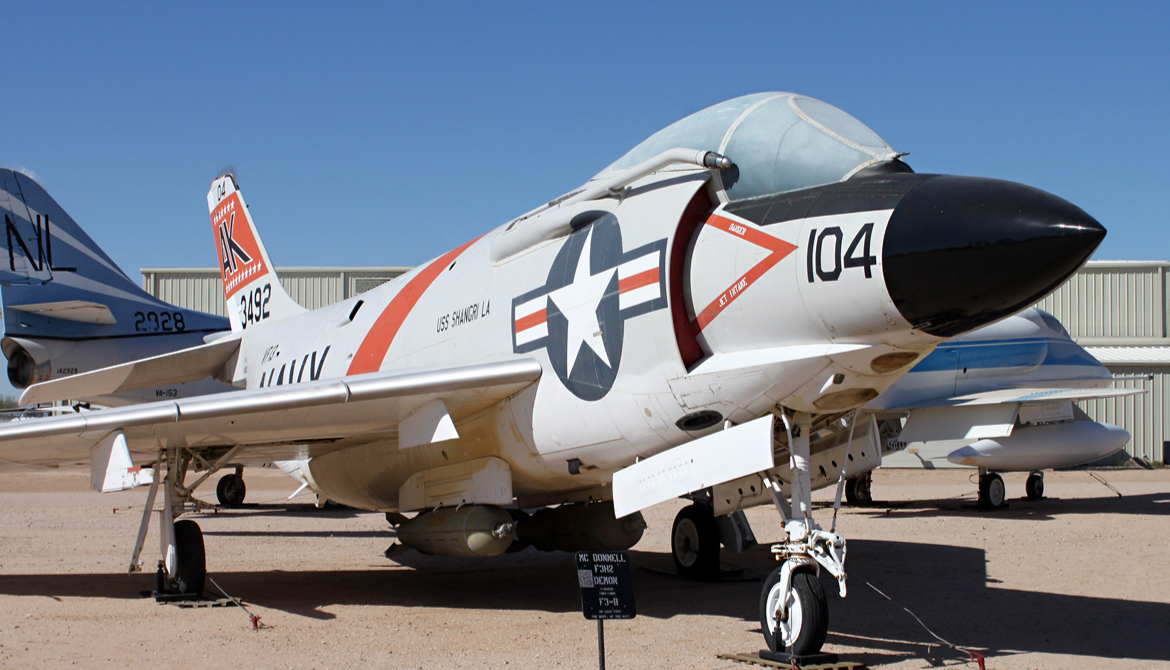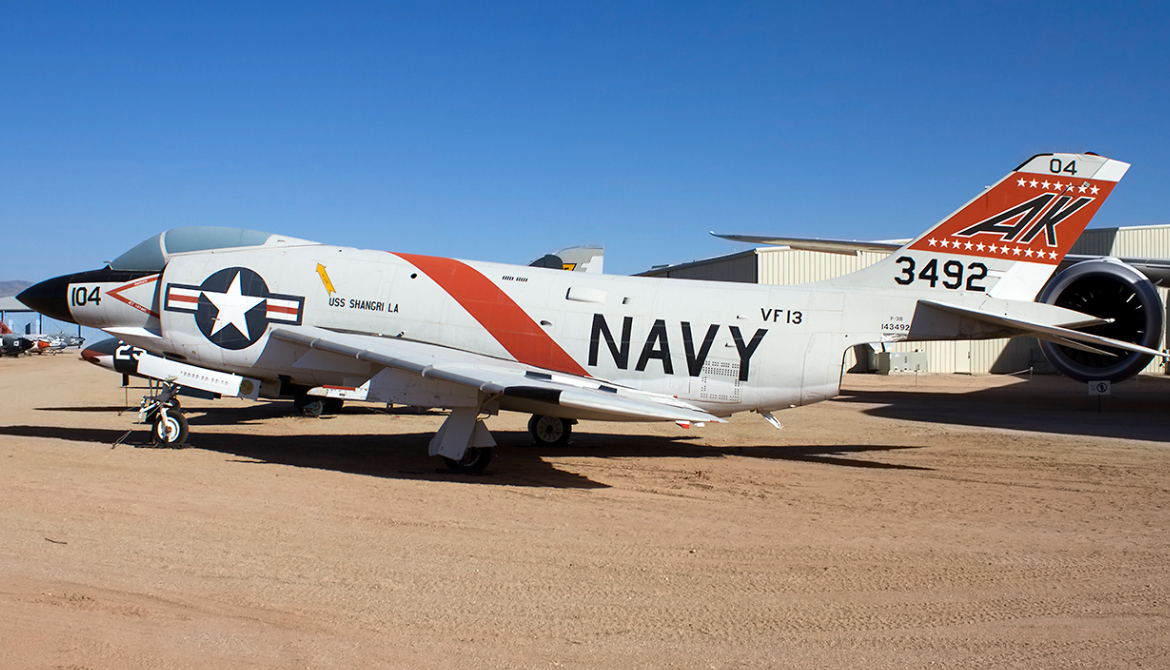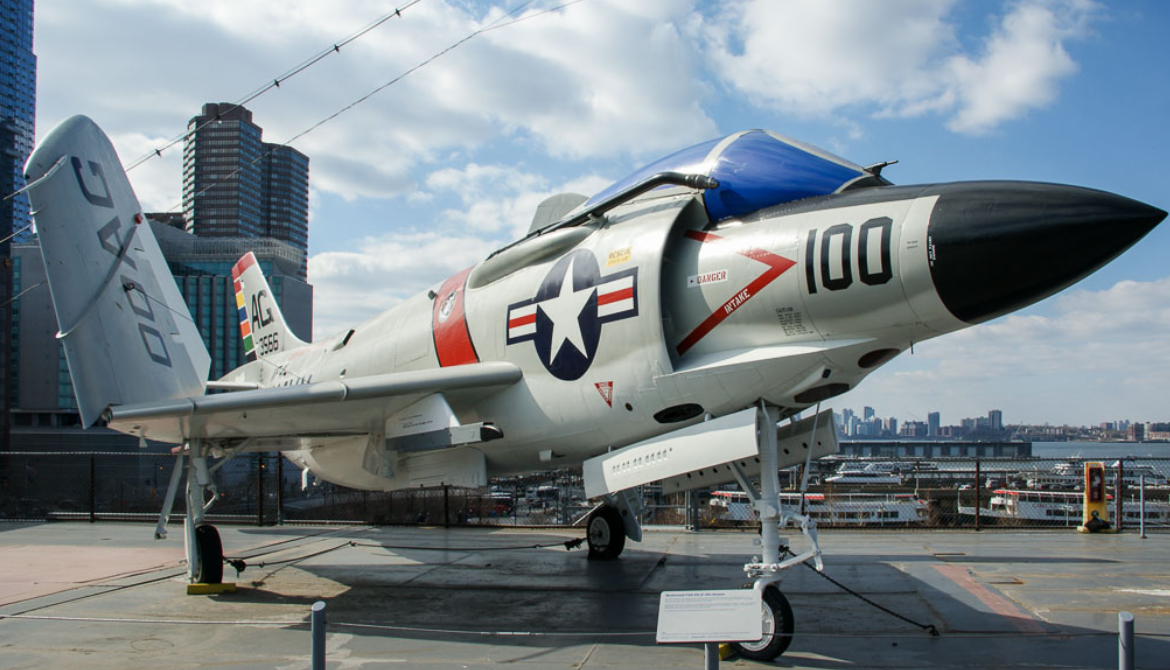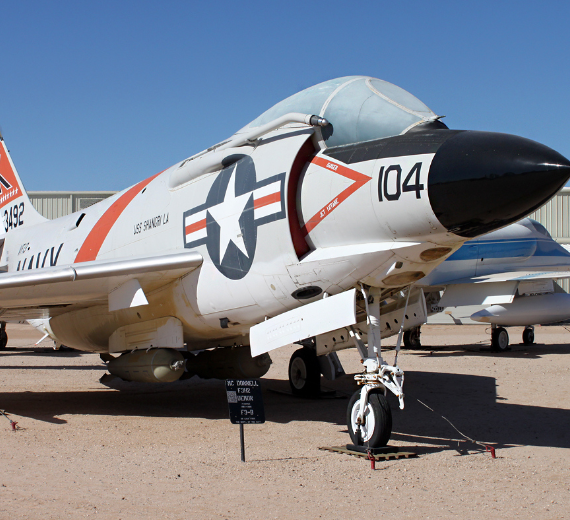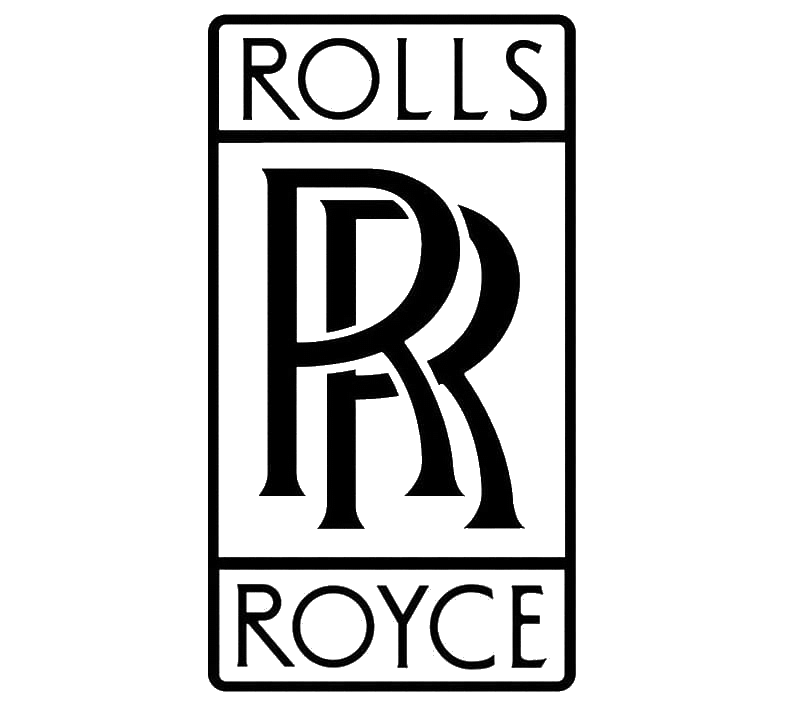.
History McDonnell/Douglas
McDonnell F3H Demon

The McDonnell F3H Demon is a subsonic swept-wing carrier-based jet fighter aircraft designed and produced by the American manufacturer McDonnell Aircraft Corporation. It was the first swept wing jet fighter and the only single-engined carrier-based fighter the company produced
The Demon was developed during the late 1940s and early 1950s to fulfill a United States Navy requirement for a high-performance swept wing naval fighter to succeed the F2H Banshee. On 7 August 1951, the XF3H-1 performed its maiden flight, flown by test pilot Robert Edholm. The original design for a short-range interceptor was reworked into a heavier medium-range all-weather fighter to counter the Mikoyan-Gurevich MiG-15 jet fighter being encountered during the Korean War; however, the addition of about 7,000 lb (3,200 kg) of weight negatively impacting the Demon's performance. The Demon was originally designed to be powered by the Westinghouse J40 turbojet engine, which suffered severe problems including low thrust output and poor reliability, and was ultimately abandoned after the matter became politically controversial in 1955. This outcome necessitated another major redesign of the aircraft to accept the alternative Allison J71 powerplant
On 7 March 1956, the Demon was introduced to operational service. Though the aircraft had insufficient power for supersonic performance and insufficient endurance for its intended general-purpose role, it complemented day fighters such as the Vought F8U Crusader and Grumman F11F Tiger as an all-weather, missile-armed interceptor. The Demon was withdrawn in 1964 and thus did not participate in the Vietnam War. Both it and the Crusader were replaced on Forrestal-class and similar supercarriers by the more capable and versatile McDonnell Douglas F-4 Phantom II, which bears a strong family resemblance, as it was conceived as an advanced development of the Demon. The supersonic F-101 Voodoo of the United States Air Force was similar in layout, but was derived from the earlier XF-88 Voodoo, which also influenced the Demon's layout.
0
KmCeiling
0
KmCombat RANGE
0
Km/hAircraft Speed
0
Max Crew
Photo Gallery
McDonnell/Douglas
McDonnell F3H Demon


McDonnell/Douglas
McDonnell F3H Demon
General Info
-
-
- Crew: 1
- Length: 59 ft (18 m)
- Wingspan: 35 ft 4 in (10.77 m)
- Height: 14 ft 7 in (4.45 m)
- Wing area: 519 sq ft (48.2 m2)
-
Powerplant
-
-
- Empty weight: 21,133 lb (9,586 kg)
- Gross weight: 33,900 lb (15,377 kg)
- Powerplant: 1 × Allison J71-A-2E afterburning turbojet engine, 9,700 lbf (43 kN) thrust dry, 14,750 lbf (65.6 kN) with afterburner
-
Performance
- Maximum speed: 716 mph (1,152 km/h, 622 kn) at sea level
-
-
-
- 647 mph (562 kn; 1,041 km/h) at 30,000 ft (9,144 m)
-
-
- Range: 1,370 mi (2,200 km, 1,190 nmi)
- Endurance: Three hours at 575 mi (500 nmi; 925 km) radius
- Service ceiling: 35,050 ft (10,680 m)
- Rate of climb: 12,795 ft/min (65.00 m/s)
Armament
-
Armament
- Guns: 4x 20 mm (0.787 in) Colt Mk 12 cannon with 150 rpg
- Missiles: 4x AIM-7 Sparrow or 4x AIM-9 Sidewinder
- Bombs: 6,000 lb (2,700 kg) of bombs
- AN/APG-51A, B, and C radar
Avionics
.
Links to Youtube & Others
The F101 was developed specifically for the Advanced Manned Strategic Aircraft, which became the B-1A. The F101 powered the four development aircraft from 1970 to 1981.
McDonnell/Douglas
McDonnell F3H Demon
The McDonnell F-101 / RF-101 Voodoo was initially designed as a long-range bomber escort, but had its role adjusted to a nuclear-armed fighter-bomber and a photo reconnaissance aircraft
Youtube Link
The General Electric F101 is an afterburning turbofan jet engine. It powers the Rockwell B-1 Lancer strategic bomber fleet of the USAF.

